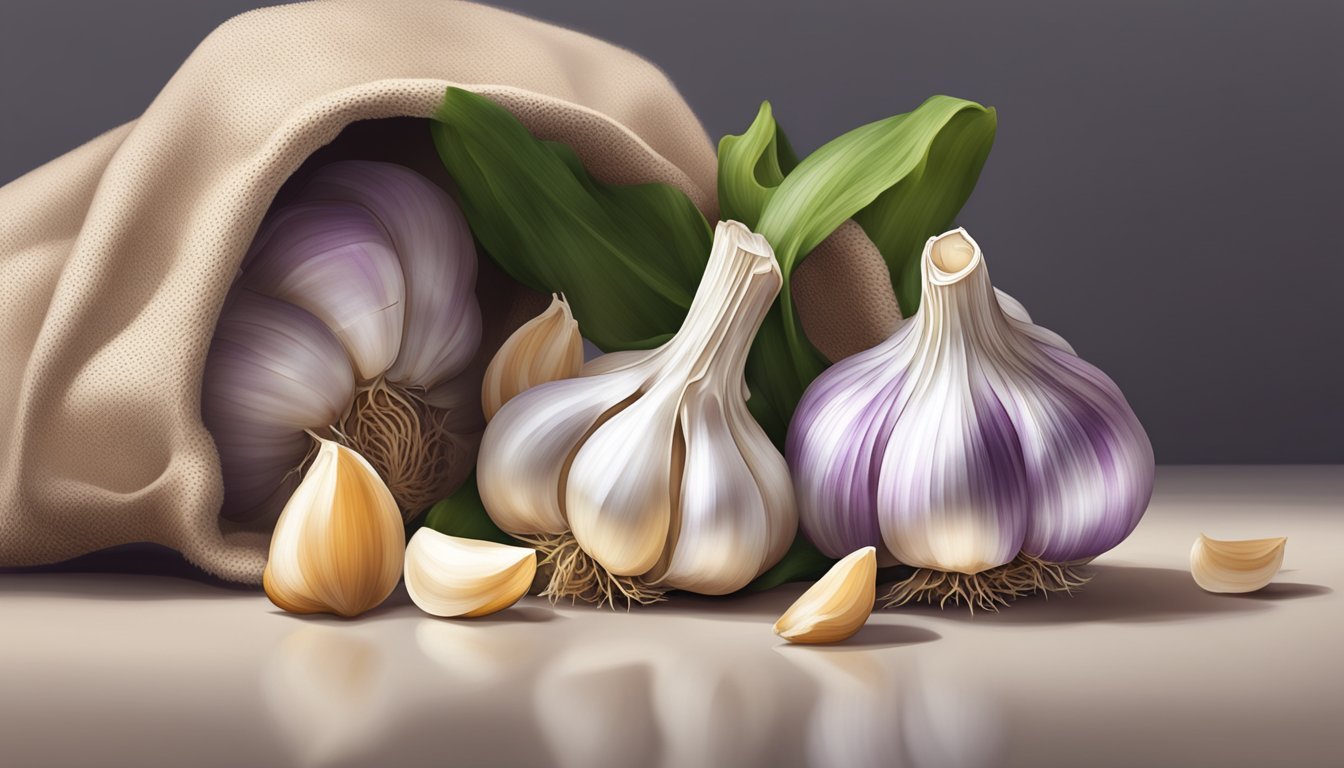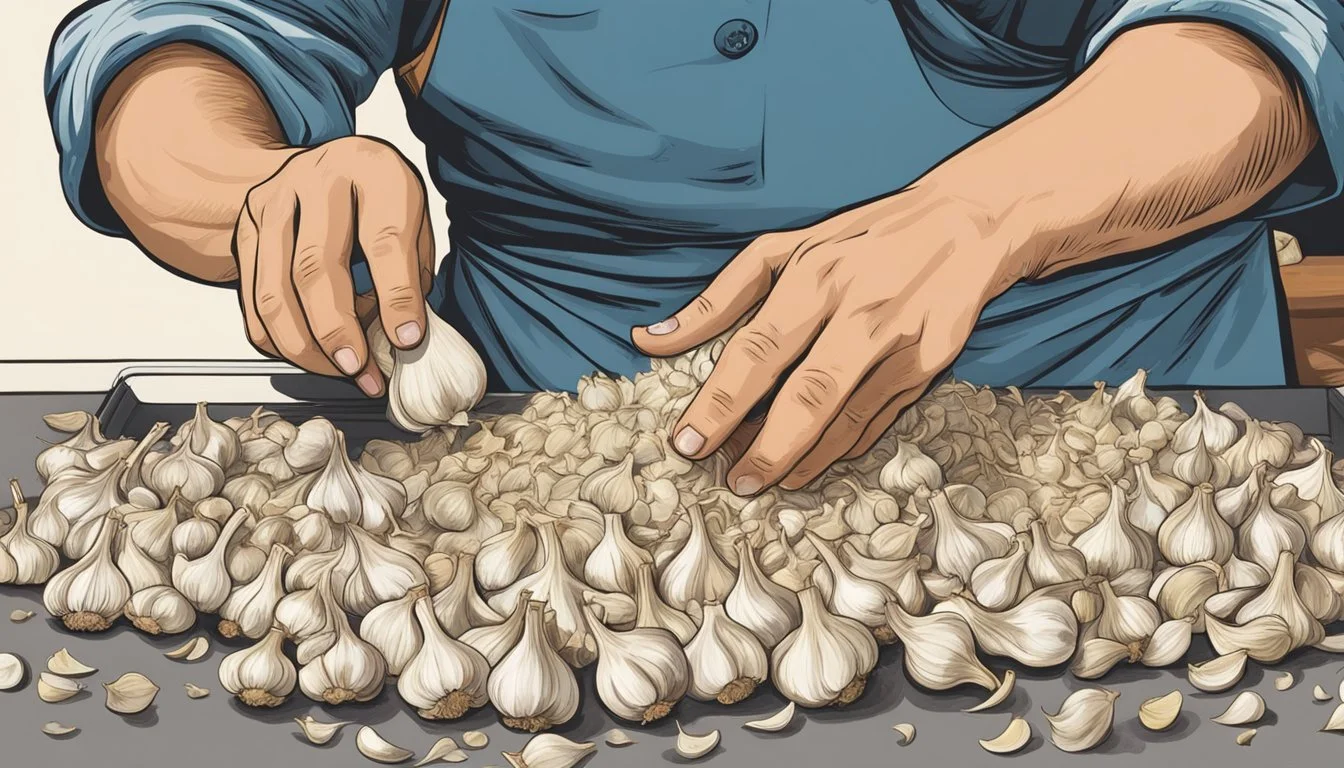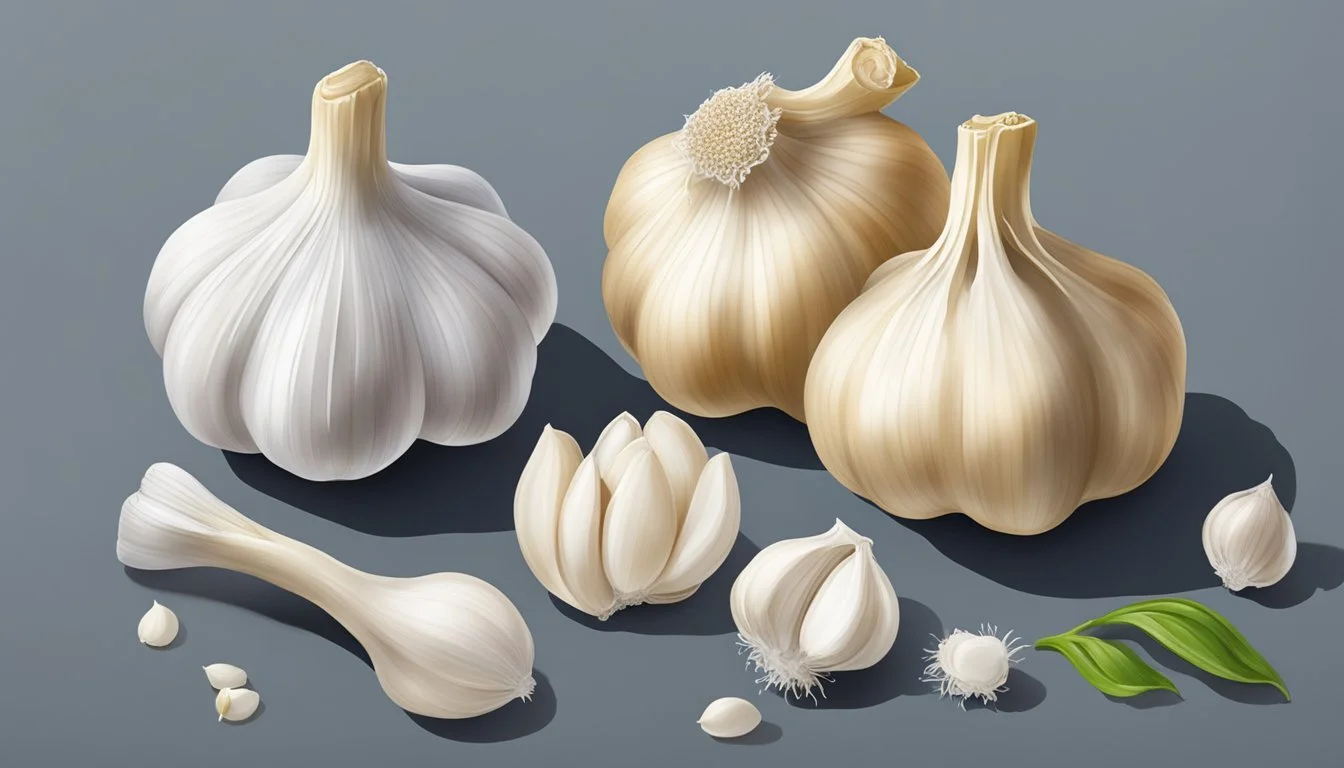Fresh vs Frozen Garlic: Comparing Flavor, Convenience, and Culinary Uses
Garlic is a staple ingredient in kitchens worldwide, prized for its pungent flavor and numerous health benefits. While fresh garlic cloves are the traditional choice, frozen garlic has gained popularity as a convenient alternative. Frozen garlic retains much of its flavor and nutritional value, making it a viable option for many recipes.
The debate between fresh and frozen garlic often centers on taste, convenience, and shelf life. Fresh garlic offers a crisp texture and intense flavor that some cooks prefer. Frozen garlic, on the other hand, provides consistent flavor and eliminates the need for peeling and chopping. This time-saving option appeals to busy home cooks and professional chefs alike.
Both forms of garlic have their place in the kitchen. Fresh garlic excels in raw applications or dishes where its texture is crucial. Frozen garlic shines in cooked recipes, sauces, and marinades where its pre-minced state integrates seamlessly. Understanding the strengths of each type allows cooks to make informed choices based on their specific needs and preferences.
Understanding Garlic: Composition and Health Benefits
Garlic is a nutrient-dense food with potent bioactive compounds. Its unique chemical makeup and inflammation-fighting properties contribute to numerous health benefits.
Chemical Properties and Allicin Content
Garlic contains various sulfur compounds, with allicin being the most notable. Allicin forms when garlic is crushed or chopped, giving it its characteristic odor and many health-promoting effects.
Raw garlic cloves are low in calories but rich in nutrients. A single clove provides vitamin C, B6, manganese, and selenium.
Garlic also contains antioxidants that help protect cells from damage. These compounds may contribute to its potential anti-cancer properties.
Garlic and Inflammation: Health Implications
Garlic's anti-inflammatory effects make it valuable for overall health. Chronic inflammation is linked to various diseases, including heart disease and certain cancers.
The sulfur compounds in garlic, particularly allicin, help reduce inflammation markers in the body. Regular garlic consumption may lower the risk of inflammatory conditions.
Studies suggest garlic may help improve cardiovascular health by reducing blood pressure and cholesterol levels. It may also boost immune function and help fight infections.
Fresh Garlic: Characteristics and Uses
Fresh garlic offers a pungent aroma and robust flavor that enhances many dishes. Its versatility and health benefits make it a staple ingredient in kitchens worldwide.
Peeling and Preparing Fresh Cloves
To peel fresh garlic, gently crush the clove with the flat side of a knife. This loosens the skin, making it easy to remove. For multiple cloves, shake them vigorously in a closed container to separate the skins.
Once peeled, garlic can be used whole, sliced, minced, or crushed. Crushing or mincing releases more allicin, the compound responsible for garlic's health benefits and strong flavor.
For easy mincing, use a garlic press or microplane grater. Alternatively, chop finely with a sharp knife on a cutting board.
Incorporating Fresh Garlic in Recipes
Fresh garlic adds depth to various dishes. For a subtle flavor, add whole peeled cloves to roasts or soups. For a stronger taste, mince or crush garlic before adding to recipes.
When sautéing, add garlic after onions to prevent burning. Cook until fragrant, about 30 seconds to 1 minute.
Raw garlic works well in dressings, marinades, and dips. For a milder flavor, roast whole garlic bulbs until soft and caramelized.
Popular garlic-centric recipes include:
Garlic bread
Aioli
Garlic mashed potatoes
Garlic-infused oils
Flavor Profile and Quality
Fresh garlic has a sharp, pungent taste when raw, which mellows and sweetens with cooking. Its flavor is more complex and intense compared to pre-processed alternatives.
Quality fresh garlic should have:
Firm, tight bulbs
Dry, papery outer skin
No visible sprouts
No soft spots or discoloration
Store fresh garlic in a cool, dry place with good air circulation. Properly stored, it can last up to 3-6 months.
For maximum flavor, use garlic soon after cutting. Its potency diminishes quickly once cloves are peeled or chopped.
Frozen Garlic: Benefits and Form Factors
Frozen garlic offers convenience and versatility in the kitchen. It comes in various forms and provides time-saving benefits for home cooks and professional chefs alike.
Different Types of Frozen Garlic Products
Frozen garlic is available in several forms to suit different cooking needs. Whole peeled cloves can be frozen and used as needed. Many stores offer pre-minced garlic in freezer-safe containers.
Crushed garlic cubes are a popular option, typically portioned into 1-teaspoon servings. These cubes often contain a blend of garlic, oil, and sometimes lemon juice or salt.
Garlic paste is another frozen option, ideal for recipes requiring smooth consistency. Some brands offer garlic slices or chopped garlic for added texture in dishes.
Convenience and Time-Saving Aspects
Frozen garlic eliminates the need for peeling and chopping, saving valuable prep time. It's ready to use straight from the freezer, making it ideal for quick meals.
The pre-portioned nature of many frozen garlic products reduces waste. Cooks can use exactly what they need without worrying about unused fresh garlic spoiling.
Frozen garlic maintains its flavor for months, ensuring a steady supply of this essential ingredient. It's particularly useful for those who don't use garlic frequently or struggle to keep fresh garlic on hand.
Using frozen garlic can help maintain consistent flavor in recipes, as its potency remains stable during freezing.
Storage and Preservation
Proper storage techniques are crucial for maintaining garlic's flavor and safety. Freezing and oil preservation offer convenient long-term options when done correctly.
Freezing Garlic at Home
Freezing garlic is a simple and effective preservation method. Peel and separate the cloves, then spread them on a baking sheet lined with parchment paper. Place the sheet in the freezer overnight. Once frozen, transfer the cloves to an airtight container or freezer bag.
Alternatively, freeze whole garlic heads in freezer-safe bags. Label the bags with the date for easy tracking.
Frozen garlic maintains its flavor but becomes softer when thawed. It's best used in cooked dishes rather than raw applications.
Safe Storage Practices for Garlic in Oil
Storing garlic in oil can be risky due to the potential for botulism. To minimize this risk, refrigerate garlic-in-oil mixtures and use them within 2-3 days.
For longer storage, acidify the oil by adding lemon juice or vinegar. Use 1 tablespoon of acid per cup of oil. This helps inhibit bacterial growth.
Commercial garlic-in-oil products are safe when refrigerated and used by the expiration date. Homemade mixtures require extra caution.
Never store garlic-in-oil at room temperature. The low-acid, oxygen-free environment can foster dangerous bacteria growth.
Culinary Techniques with Garlic
Garlic adds depth and flavor to countless dishes. Its versatility shines through various cooking methods, from raw preparations to roasting and infusing.
Blending Garlic into Sauces and Pesto
Raw garlic packs a potent punch in sauces and pestos. For a classic pesto, blend 2-3 cloves with basil, pine nuts, olive oil, and Parmesan cheese. Adjust garlic quantity to taste.
In aioli, mince 1-2 cloves and whisk with egg yolks, lemon juice, and oil. For a milder flavor, roast garlic first.
Garlic enhances tomato sauces. Sauté minced cloves in olive oil before adding tomatoes. For a smoother texture, blend roasted garlic directly into the sauce.
The Art of Baking with Garlic
Garlic bread is a beloved staple. Mix softened butter with minced garlic, herbs, and a pinch of salt. Spread on sliced baguette and bake until golden.
For savory pastries, fold roasted garlic into dough. It pairs well with cheese fillings in tarts and quiches.
Whole roasted garlic heads make an excellent spread. Cut off the top, drizzle with oil, wrap in foil, and bake at 400°F (200°C) for 40 minutes.
Creating Infused Oils and Flavored Butters
Garlic-infused oil adds flavor to dishes and dressings. Gently heat peeled cloves in neutral oil like canola for 5 minutes. Cool and strain.
For a quick infusion, blend raw garlic with oil and strain through cheesecloth. Use within a week and refrigerate.
Garlic butter elevates steaks and vegetables. Mash roasted garlic into softened butter with herbs. Roll into a log, chill, and slice as needed.
Frozen garlic cubes work well in these techniques. They maintain flavor and are conveniently portioned for easy use in recipes.
Comparative Analysis: Fresh vs. Frozen Garlic
Fresh and frozen garlic each have distinct characteristics that impact their use in cooking. The differences between these forms of garlic extend to their taste, nutritional content, and availability.
Taste and Aroma Considerations
Fresh garlic offers a sharp, pungent flavor and aroma when first cut or crushed. This intensity can mellow slightly during cooking. The crisp texture of fresh cloves adds a satisfying crunch to dishes when used raw.
Frozen garlic maintains much of its flavor potency, though it lacks the crunchy texture of fresh. It avoids the chemical taste sometimes found in jarred garlic alternatives. Frozen garlic cubes or pre-minced options provide convenience without significantly compromising taste.
For recipes where garlic is a prominent flavor, fresh cloves may be preferable. In cooked dishes where garlic is part of a flavor base, frozen varieties can serve as an adequate substitute.
Nutritional Value Comparison
Fresh garlic contains various beneficial compounds, including allicin, which forms when cloves are crushed or chopped. These compounds contribute to garlic's potential health benefits.
Freezing garlic can impact its nutrient content, particularly if the cloves are chopped or crushed before freezing. Whole, unpeeled frozen cloves retain more of their nutritional value compared to pre-processed options.
The method of freezing affects nutrient preservation. Freezing whole cloves or quickly freezing chopped garlic helps maintain more of its nutritional benefits compared to slow freezing or storing in oil.
Accessibility and Availability
Fresh garlic is widely available in grocery stores year-round. It offers the advantage of selecting individual bulbs for quality and allows for long-term storage in cool, dry conditions.
Frozen garlic provides consistent availability and eliminates the need for peeling and chopping. Pre-portioned frozen garlic cubes offer precise measurements for recipes, saving time in meal preparation.
For those who use garlic infrequently, frozen options can reduce waste. Fresh garlic may sprout or spoil if not used promptly, while frozen varieties have a longer shelf life when stored properly.
Practical Tips for Cooking with Garlic
Garlic adds depth and flavor to many dishes. Proper selection, preparation, and usage techniques can elevate your cooking and maximize garlic's potential in recipes.
Choosing the Right Garlic Form for Dishes
Fresh garlic cloves offer the most potent flavor. They work well in sautés, marinades, and dressings. Minced garlic provides convenience and distributes evenly in sauces and stir-fries.
Garlic powder suits dry rubs and seasoning blends. It dissolves easily in liquids. Garlic salt combines salt and dehydrated garlic, ideal for sprinkling on finished dishes.
Frozen garlic cubes maintain flavor and are ready to use. They're great for soups and stews. Jarred minced garlic offers a time-saving option but may lack the punch of fresh cloves.
Techniques to Mince and Crush Garlic
A sharp knife is essential for mincing garlic. Crush cloves with the flat side of the blade to remove skins easily. Chop finely for even distribution in dishes.
A garlic press produces a fine mince quickly. It's perfect for recipes requiring a smooth texture. Clean thoroughly after use to prevent clogs.
For crushed garlic, use a mortar and pestle. This method releases oils and creates a paste-like consistency. It's ideal for marinades and dressings.
Recommendations for Store-Bought Garlic Products
Trader Joe's offers frozen garlic cubes that maintain flavor well. They're convenient for quick meal prep. Jarred minced garlic from reputable brands can be a good pantry staple.
Look for garlic powder without added ingredients for versatility in cooking. Store in an airtight container to prevent clumping. Garlic salt should be used sparingly to avoid over-salting dishes.
Pre-peeled garlic cloves save time but should be used quickly. They're best for recipes requiring whole cloves. Always check for freshness before use.
Health and Safety Considerations
Garlic offers many health benefits, but improper storage and handling can pose risks. Understanding potential hazards and following best practices helps ensure safe consumption of both fresh and frozen garlic.
Potential Risks of Botulism from Garlic in Oil
Garlic-infused oils can create an environment conducive to botulism-causing bacteria growth. Clostridium botulinum spores thrive in low-acid, oxygen-free conditions. When garlic is submerged in oil, it creates this ideal habitat.
Botulism is a rare but serious illness that can cause paralysis and even death. Symptoms include difficulty swallowing, muscle weakness, and blurred vision.
To minimize risks:
Refrigerate homemade garlic-in-oil mixtures and use within 7 days
Discard if left at room temperature for over 2 hours
Use commercial garlic-in-oil products and follow expiration dates
Best Practices to Avoid Contamination
Proper handling and storage of garlic is crucial for food safety. Follow these guidelines:
Store whole garlic bulbs in a cool, dry, well-ventilated area
Keep peeled or chopped garlic refrigerated in an airtight container
Freeze minced garlic in small portions for long-term storage
Wash hands and utensils thoroughly after handling garlic
Inspect garlic for signs of spoilage before use (discoloration, soft spots, mold)
For frozen garlic:
Freeze in airtight containers or freezer bags
Label with date and use within 6 months for best quality
Thaw in refrigerator before use
These practices help maintain garlic's safety and quality, whether fresh or frozen.
Culinary Applications: Soups, Stews, and Beyond
Garlic plays a crucial role in enhancing the flavor profiles of soups and stews. Its versatility allows it to be used in various forms, from fresh to frozen, adapting to different cooking methods and recipe requirements.
Enhancing Soups with Garlic
Fresh garlic adds a robust, aromatic quality to soups. Minced or sliced cloves can be sautéed with other base ingredients like onions and carrots. This process releases their essential oils, creating a flavorful foundation.
Frozen garlic offers convenience for quick soup preparation. It can be added directly to the pot, melting and infusing the broth with its essence. Garlic powder serves as a shelf-stable alternative, ideal for last-minute flavor adjustments.
For a milder garlic taste, whole cloves can be roasted before adding to soups. This method imparts a sweet, nutty flavor that complements creamy vegetable purees and hearty bean soups.
Stews and Hearty Dishes with Garlic
Garlic is indispensable in stews, contributing depth and complexity to long-simmered dishes. Fresh cloves, crushed or chopped, release their flavors gradually during cooking, melding with other ingredients.
Frozen garlic chunks work well in slow-cooked stews, maintaining their integrity and flavor throughout the cooking process. They're particularly useful in recipes that call for whole cloves, such as beef bourguignon or chicken cacciatore.
For a more intense garlic presence, try adding a mixture of fresh and powdered garlic at different stages of cooking. This technique creates layers of flavor, from sharp top notes to mellow undertones.
Garlic-infused oils can be drizzled over finished stews for an extra burst of flavor. This method works especially well with Mediterranean-inspired dishes like ratatouille or cioppino.






